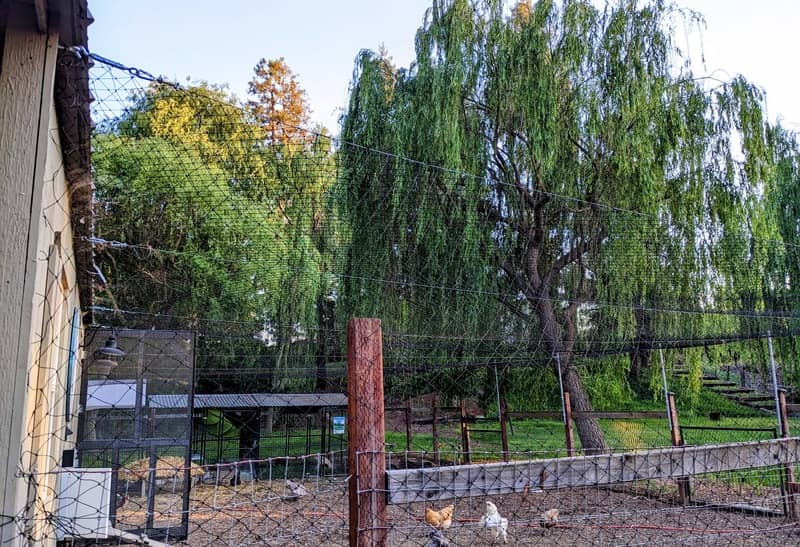The killings started as the sheer force of winter was in full view. The flooding had caused a shuffling of the natural order, an exodus of wildlife to higher ground and away from the riparian habitat. The cacophony of sounds that resulted on those nights, the water rushing while the breaking of branches and the scampering of paws and claws, led to Monica’s encounter with a mountain lion—a story in and of itself for a later time.
This chaos was not unexpected, but scattered not just the larger predators that surround us—mountain lions, bobcats, foxes, raccoons, and coyotes—but all the prey that make up the ecosystem. This is the reason the killings likely began.
When the flood waters had receded into at least a manageable state, our chickens and ducks were moved back to their original run on a temporary basis. The ducks were pleased with this, as natural temporary ponds had popped up and they were happy to make use of them. The acre that our birds wandered was always fairly well protected as country living goes; fully fenced with natural hides. By no means would one consider this arrangement predator proof but given the daily activity of dogs and people, we considered the risk minimal.
We were of course vastly wrong, for the killings came not from the ground predators we feared but rather the sky. In particular, the cleverness and smarts of one particular red-tailed hawk became a problem.
Birds of prey are not uncommon around us. Owls of various types rule the night, and hawks and falcons are common sights. For this specific red-tailed hawk however, when winter pickings were thin, chicken and duck were on the menu. The hawk began killing our smaller breeds, ducks and silkies. Piles of feathers stacked up. We rapidly locked down what we could using available bird netting, but this was no match for the smartness of the hawk, who would exploit small holes no larger than 1x1 feet to simply gain access to the main run. It was brazen; one of the last chickens it killed after defeating the netting it never took out of the run. Instead I walked into the run to come face to face with a very large hawk who did not spook.
Clearly something would have to be done. Alas, flooding continued, chicken and ducks were again moved to high ground, and we devised a better plan.

Installing a zoo-style enclosure was not an easy task. The main run is fenced with predator wire and measures nearly 6000 square feet. Proper stainless steel zoo enclosure netting is neither inexpensive nor easy to install and we found cost prohibitive. We did however find a 15 year rated poly-nylon mix that was less expensive with various opening sizes. Using a mix of pipe found on the property and stainless steel 3/32in runners between cuts and tapped pipe to the main building, this allowed us to create our net lift without center supports. Given the fence and coop height, we’re able to get around 14 feet of clearance across the run.
Completed, it took a weekend to get the netting right with UV resistant zip ties and a lot of up and down on the ladder. It’s definitely a two person job, if not two persons and all your kids. You will potentially place your marriage in ruins as you try to get the alignment right (even with a lot of planning), but it all comes down to patience and more patience.
After installation, the end result is rather nice and somewhat invisible (it’s hard to photograph). We’ve had zero issues with hawks to date. The chickens and ducks still roam the lower acre under dog and person supervision most days. This is not to say the hawks are gone. Anything but; we’ve counted more hawks this year than last and the specific hawk we see most days sitting on the willow branch looking for weaknesses in the net.
I can only hope the hawk continues to focus on other critters in the food chain.
In total, the cost was around $600.00 USD, keeping mind I did not buy the posts (which we had on the property), and that I overbought on the stainless steel wire (I had other projects to use the 500 foot spool). That said, I doubt from a cost perspective we could have done it for much less. The netting is the largest expense, and we tried different types that failed in the rain, wind, and sun. This is also not stainless steel zoo netting; that stuff will break the bank, at least at our scale. But overall, as summer now rages on, we’ve had zero issues.


